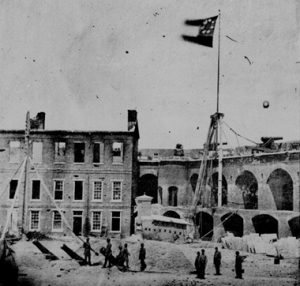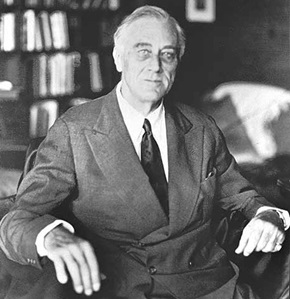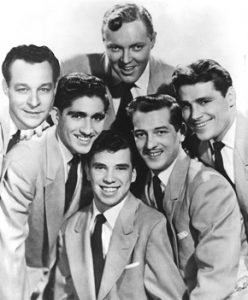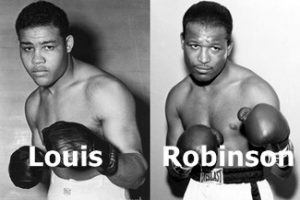On April 12…
History is who we are and why we are the way we are. You can’t be a full participant in our democracy if you don’t know our history.
~David McCullough

1861– The bloodiest four years in American history began when Confederate shore batteries under General P.G.T. Beauregard opened fire on Union-held Fort Sumter in South Carolina’s Charleston Bay. During the next 34 hours, 50 Confederate guns and mortars launched more than 4,000 rounds at the poorly supplied fort.
On April 13, U.S. Major Robert Anderson surrendered the fort (the photo above shows the Confederate flag being raised). No one on either side had been killed, although two Union soldiers died when the departing soldiers fired a gun salute, and some cartridges exploded prematurely. It was a nearly bloodless beginning to America’s bloodiest war.
Two days later, U.S. President Abraham Lincoln issued a proclamation calling for 75,000 volunteer soldiers to quell the Southern “insurrection.”

1864– Major General Nathan Bedford Forrest’s Confederate raiders attacked the Union garrison at Fort Pillow, Tennessee, overlooking the Mississippi River. The fort, an important part of the Confederate river defense system, had been captured by federal forces in 1862. Of the 500-strong Union garrison defending the fort, more than half the soldiers were African-Americans.
After an initial bombardment, General Forrest asked for the garrison’s surrender. The Union commander refused, and Forrest’s 1,500 cavalry troopers easily stormed and captured the fort, suffering only moderate casualties.
However, the extremely high proportion of Union casualties –231 killed (2/3 of them black) and more than 100 seriously wounded – raised questions about the Confederates’ conduct after the battle. Union survivors’ accounts, later supported by a federal investigation, concluded that African-American troops were massacred by Forrest’s men after surrendering.
Union fatalities were buried in a mass grave (shown above) at the end of the fort. The bodies were laid in the moat and dirt was shoveled down from the parapet. In the spring of 1866 the bodies were exhumed and re-interred in the memorial cemetery south of the fort.
The Confederates evacuated Fort Pillow that evening so they gained little from the attack except to temporarily disrupt Union operations. The Fort Pillow Massacre became a Union rallying cry and cemented resolve to see the war through to its conclusion.

1945– U.S. President Franklin Delano Roosevelt, the longest serving president in American history, died three months into his fourth term.
Roosevelt was at his “Little White House” retreat in Warm Springs, GA to rest before his anticipated appearance at the founding conference of the United Nations.
On the afternoon of April 12, Roosevelt said, “I have a terrific headache.” He then slumped forward in his chair, unconscious, and was carried into his bedroom. The president’s attending cardiologist, Dr. Howard Bruenn, diagnosed the medical emergency as a massive cerebral hemorrhage. At 3:35 p.m, Roosevelt died at the age of 63.
The photo above was taken one day before Roosevelt’s death. It was the final photograph taken during his life.

1954– Bill Haley and the Comets recorded (We’re Gonna) Rock Around The Clock at Pythian Temple studios in New York City. If rock and roll was a social and cultural revolution, then (We’re Gonna) Rock Around The Clock was its Declaration of Independence.
Bill Haley put his enormous signature on rock and roll history during the final 40 minutes of a three-hour recording session set up not for the recording of (We’re Gonna) Rock Around The Clock, but of a song called Thirteen Women (and Only One Man In Town).
It took the group nearly all of their scheduled session to get a useable take of Thirteen Women. With time running out and no chance of extending the session, Haley and his Comets had time for two takes. The lead guitarist brought in for the session, Danny Cedrone, was paid $21 for his work that evening, which included performing what is still recognized as one of the greatest guitar solos of all time.
Because of the rushed nature of the recording of Rock Around The Clock, Cedrone did not have time to put together a unique guitar solo for the song. So he stuck in a solo strongly resembling one he had used two years earlier with Haley on a song called Rock This Joint. Tragically, Cedrone died just two months later when he fell down a flight of stairs, breaking his neck and dying instantly.
The single sold a respectable but underwhelming 75,000 copies in the coming months, and was destined to be forgotten until it chosen to play over the opening credits of the 1955 film, Blackboard Jungle. On July 9, 1955, Rock Around The Clock became the first rock and roll recording to hit the top of Billboard’s Pop charts, a feat it repeated on charts around the world.

1961– Onboard the spacecraft Vostok 1, Soviet cosmonaut Yuri Gagarin became the first human being to travel into space. During the flight, the 27-year-old test pilot and industrial technician also became the first man to orbit the planet, a feat accomplished by his space capsule in 89 minutes. Vostok 1 orbited Earth at a maximum altitude of 187 miles and was guided entirely by an automatic control system.
The triumph of the Soviet space program in putting the first man into space was a great blow to the United States, which had scheduled its first space flight for May 1961. Moreover, Gagarin had orbited Earth, a feat that eluded the U.S. space program until February 1962, when astronaut John Glenn made three orbits in Friendship 7. By that time, the Soviet Union had already made another leap ahead in the “space race” with the August 1961 flight of cosmonaut Gherman Titov in Vostok 2. Titov made 17 orbits and spent more than 25 hours in space.

1981– The U.S. had their revenge. The space shuttle Columbia was launched from Cape Canaveral, Florida, becoming the first reusable manned spacecraft to travel into space. Piloted by astronauts Robert L. Crippen and John W. Young, the Columbia undertook a 54-hour space flight of 36 orbits before successfully touching down at California’s Edwards Air Force Base.

1981– Former heavyweight boxing champion Joe Louis died of cardiac arrest at the age of 66. The “Brown Bomber” had a career record of 66-3 with 52 knockouts.
1989– Former welterweight and middleweight boxing champion “Sugar Ray” Robinson died of complications of diabetes and Alzheimer’s disease. He was 67. Robinson’s career record was 171-19-6, with 108 knockouts.
In addition to being two of the greatest boxers in history, these men shared something else. Despite earning millions in the ring, they both struggled financially, thanks to numerous con artists and the overall corruption of the boxing business that existed in their lifetimes.
Compiled by Ray Lemire ©2018 RayLemire.com. All Rights Reserved.